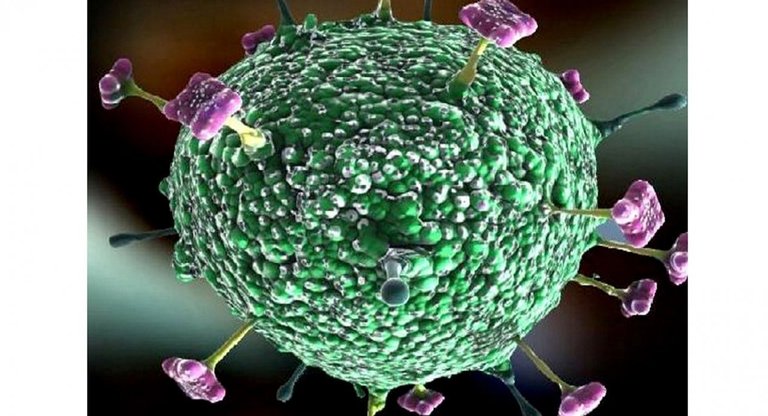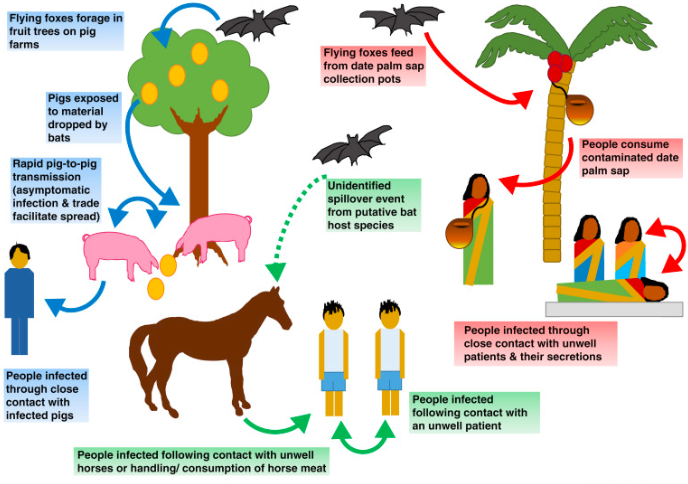NiV was initially isolated and identified in 1999 during an outbreak of encephalitis and respiratory illness among pig farmers and people with close contact with pigs in Malaysia and Singapore. Its name originated from Sungai Nipah, a village in the Malaysian Peninsula where pig farmers became ill with encephalitis
In 2001, NiV was again identified as the causative agent in an outbreak of human disease occurring in Bangladesh. Genetic sequencing confirmed this virus as Nipah virus, but a strain different from the one identified in 1999. (Source.CDC)
On 19 May 2018, three deaths due to Nipah virus infection were reported in Kozhikode District, Kerala State, India. The three deaths occurred in a family cluster and a fourth death was subsequently reported in a health care worker who was involved in treatment of the family in the local hospital.
The Nipah virus is believed to be transmitted from animals to humans. According to the World Health Organization (WHO), fruit bats are the natural hosts of the disease.
Symptoms of Nipah virus:
.fever
.headache
.drowsiness
.disorientation
.mental confusion
.respiratory illness
Treatment:
Currently, there are no specific treatments available for Nipah virus disease and care is supportive. Intensive supportive care is recommended to treat severe respiratory and neurologic complications.
NiV infection can be prevented by avoiding exposure to sick pigs and bats in endemic areas, and by avoiding consuming fruits partially-eaten by infected bats or drinking raw date palm sap/toddy/juice.(Source:WHO)
Prevention is better than cure.
STAY ALERT STAY SAFE
Hi! I am a robot. I just upvoted you! I found similar content that readers might be interested in:
http://www.who.int/csr/don/31-may-2018-nipah-virus-india/en/
Congratulations @ginni3! You received a personal award!
You can view your badges on your Steem Board and compare to others on the Steem Ranking
Do not miss the last post from @steemitboard:
Vote for @Steemitboard as a witness to get one more award and increased upvotes!